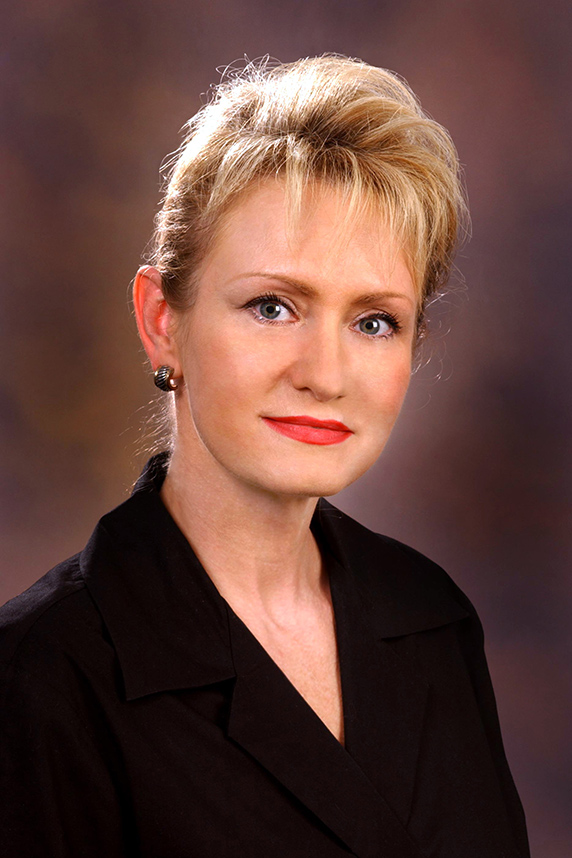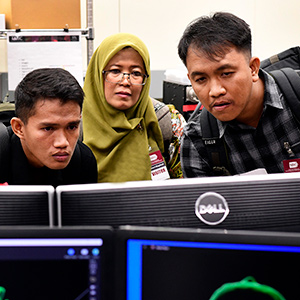The NIEHS Office of Communications and Public Liaison (OCPL) rolled out a series of new and improved web pages on environmental health topics in recent weeks, to keep up with advances in studies of health, science, and the environment.
 NIEHS lists actions that can reduce exposure to pet allergens, such as using allergen-proof covers for beds, keeping pets out of the bedroom, using air filters, and other strategies. (Photo courtesy of NIEHS)
NIEHS lists actions that can reduce exposure to pet allergens, such as using allergen-proof covers for beds, keeping pets out of the bedroom, using air filters, and other strategies. (Photo courtesy of NIEHS)The newest content relates to lung health, including pet allergens, smoking and vaping, asthma, pollen, and dust mites and cockroaches. OCPL hopes the web pages, along with other educational resources like brochures and booklets, will help people make sense of the latest scientific research on environmental health.
Keeping up with the times
 Flowers serves as the communications director for NIEHS. (Photo courtesy of Steve McCaw)
Flowers serves as the communications director for NIEHS. (Photo courtesy of Steve McCaw)“The number of publications in environmental health journals has been rising every year at a rate that challenges even the most avid readers, both scientists and laymen,” said NIEHS epidemiologist Paivi Salo, Ph.D., who has lent her expertise to many of the recent updates. “In the era of Big Data, the growth rate of information has been exponential in many areas of environmental health research.”
Easy access to lots of information may be good, but it can also be difficult to sort through and evaluate. “So OCPL created the Environmental Health Topics webpages as a reliable, science-based resource for people who want to know how chemicals and environmental agents may be affecting their health,” said NIEHS Communications Director Christine Bruske Flowers.
The office gets help from NIEHS librarians and subject matter experts like Salo to capture the latest research on a particular topic and ensure accuracy.
These topics (see sidebar) cover conditions and diseases linked to environment exposures, environmental agents that may cause health effects, basic concepts in environmental health science, and population research on people exposed to environmental agents.
Public impact
 Salo is part of the Environmental Cardiopulmonary Disease Group, which is led by NIEHS Scientific Director Darryl Zeldin, M.D. (Photo courtesy of Steve McCaw)
Salo is part of the Environmental Cardiopulmonary Disease Group, which is led by NIEHS Scientific Director Darryl Zeldin, M.D. (Photo courtesy of Steve McCaw)“Sharing new knowledge and the latest research findings with the public is an integral part of our institute’s mission,” said Salo. “Effective dissemination of advances in science is crucial because it can help with evidence-based decision-making and improvements in public health.”
Updates to an environmental health topic can indicate new strategies for addressing public health issues. For example, the asthma page now highlights an NIEHS-funded study of inner-city students that linked airborne mouse allergens in schools to increased asthma symptoms in children. The findings suggest schools can take steps to improve air quality and help children who have asthma.
In other cases, the coverage of environmental health topics underscores the need for more evidence on the potential impact of new chemicals, products, or devices. For example, e-cigarettes are often thought to be safer than tobacco cigarettes, although little is known about the health effects of their use.
The Smoking and Vaping page points to the NIEHS E-Cigs and Smoking Study, which is developing new biomarkers, or signs of a normal or abnormal response, of e-cigarette use or tobacco smoke exposure.
(Marla Broadfoot, Ph.D., is a contract writer for the NIEHS Office of Communications and Public Liaison.)









